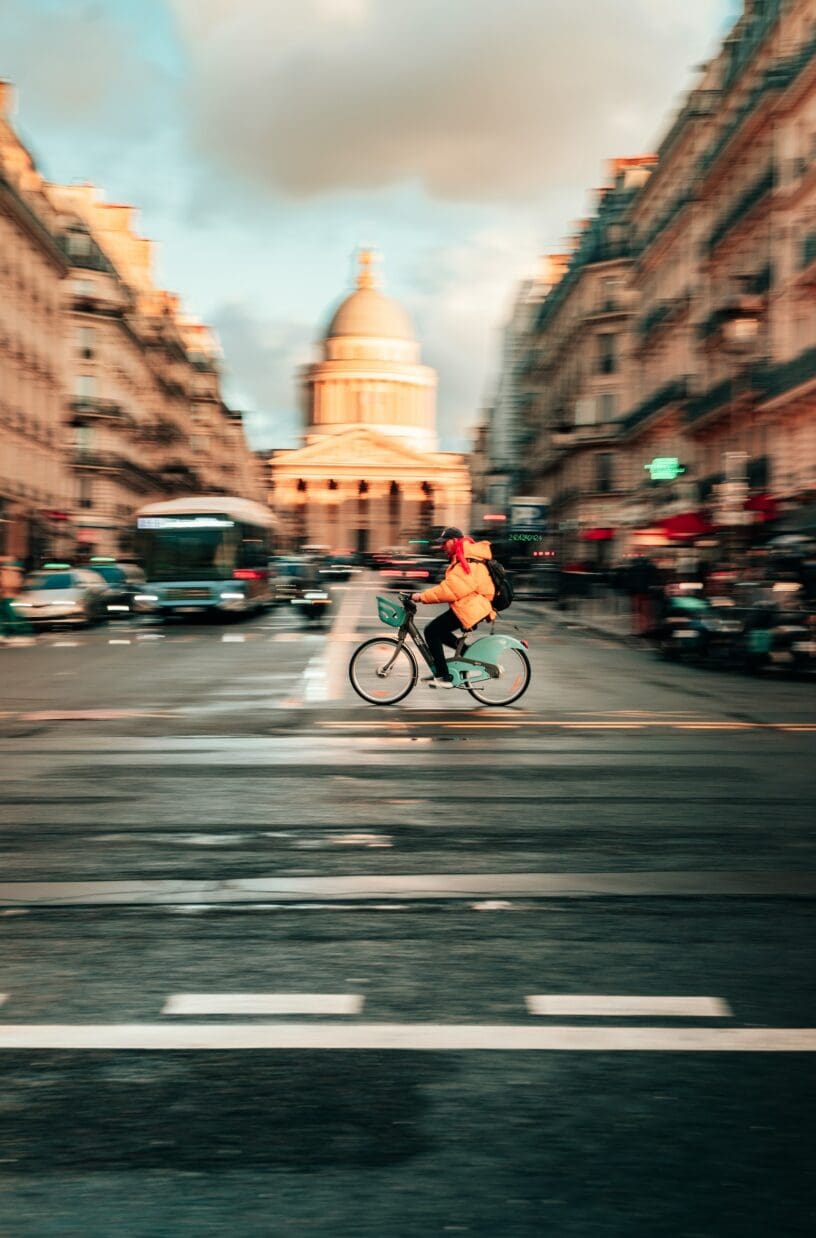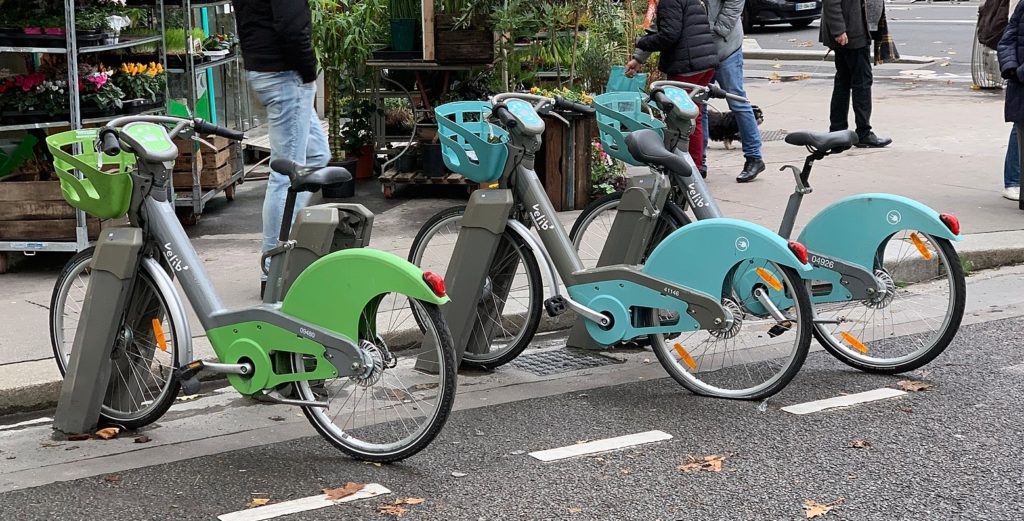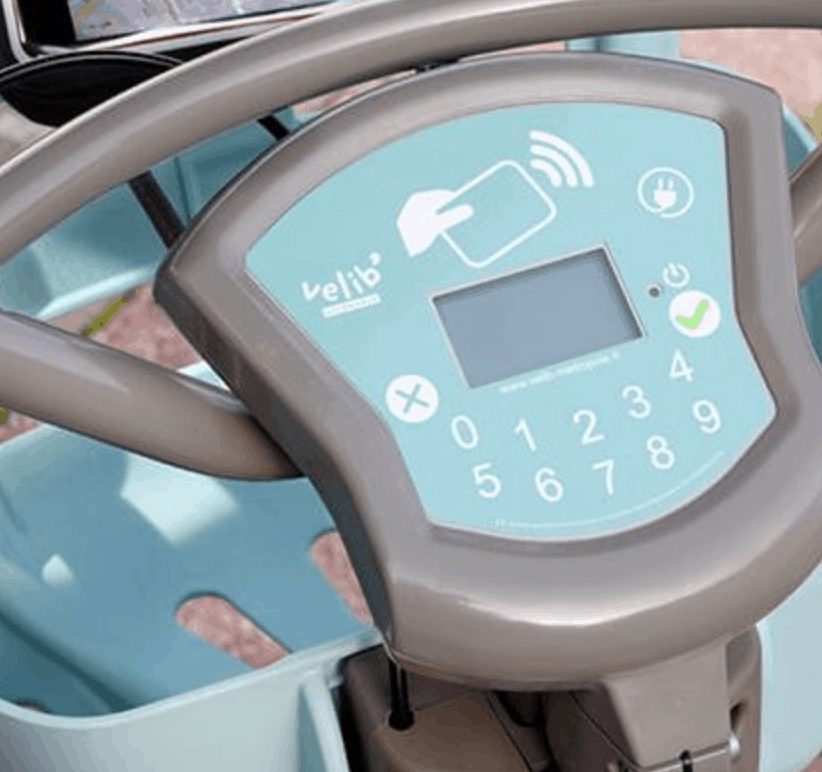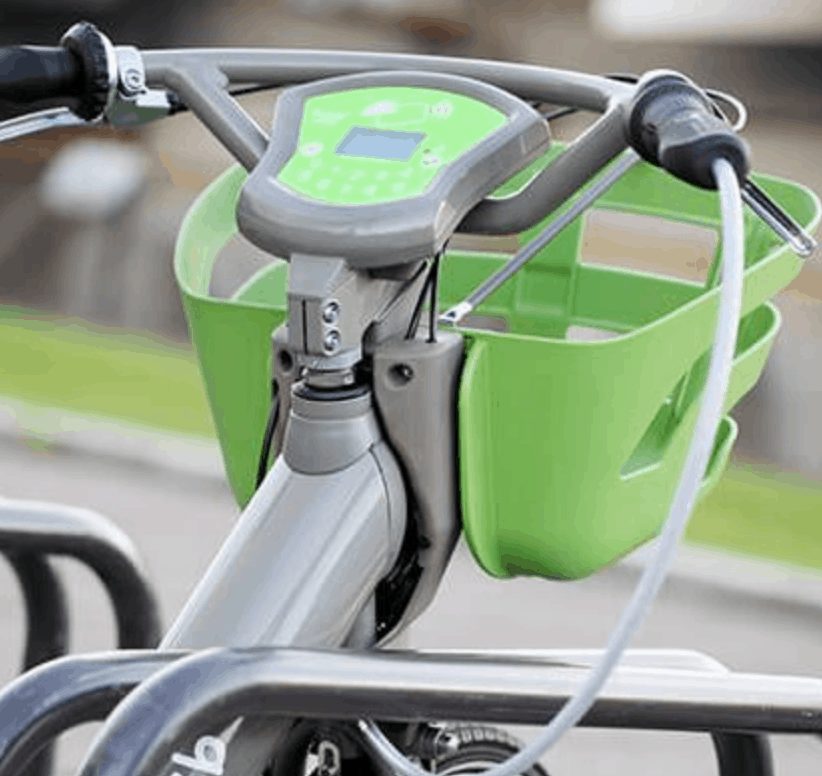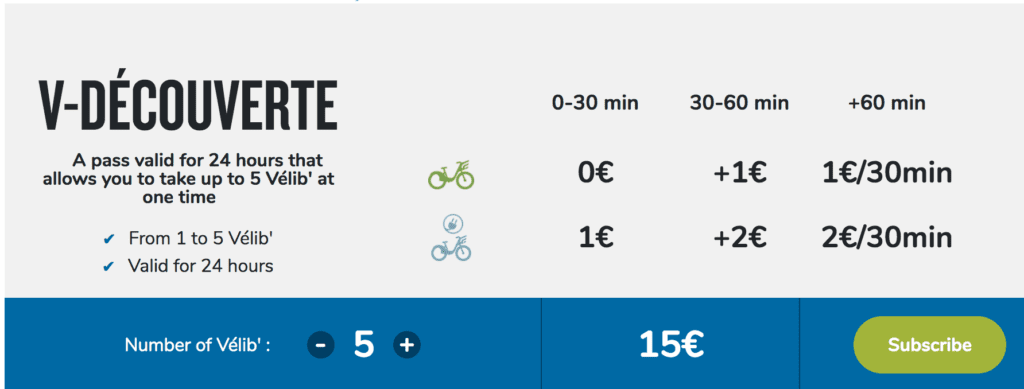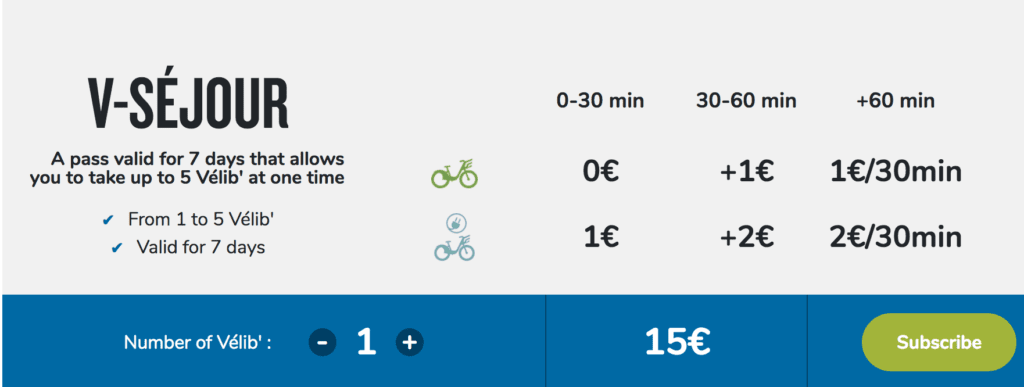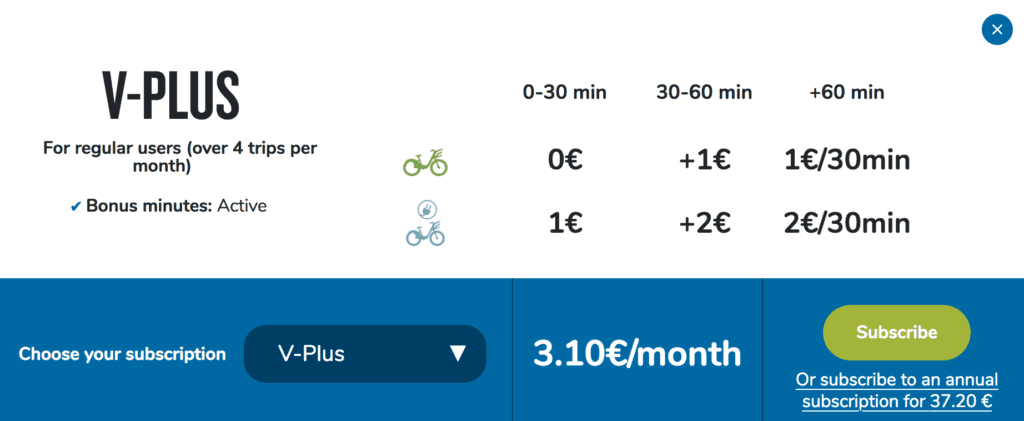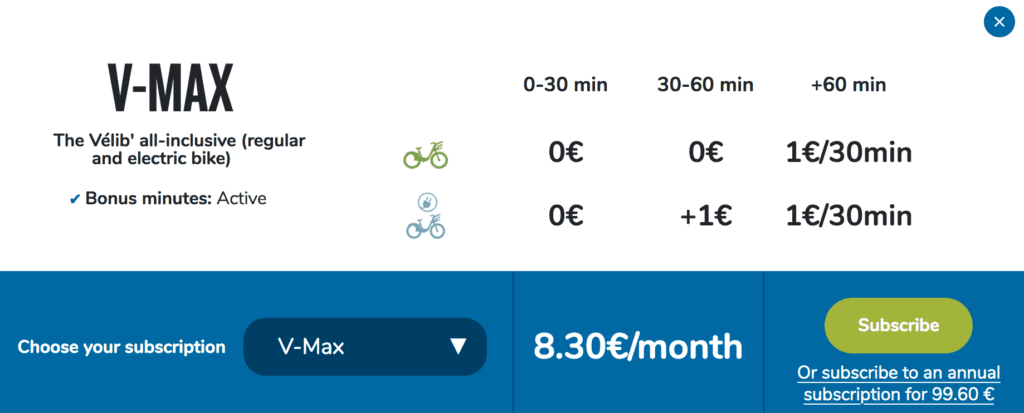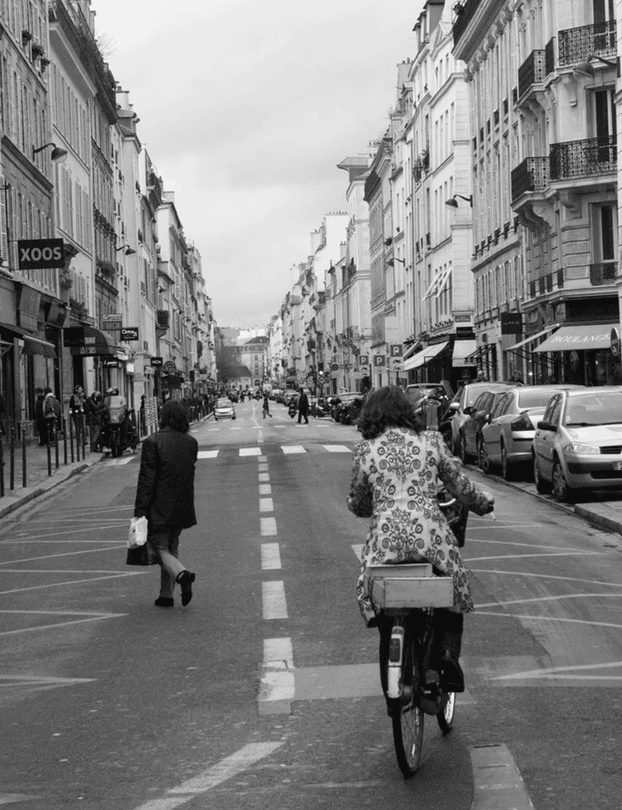How to Rent a Bike in Paris: The Vélib’
Updated by Vanessa M in September 2023.
Paris is a city best explored above ground, be it on foot or by bike. Despite what you may think, Paris is actually very cyclist friendly, and is becoming even more so. The public city bikes or velib’ are an essential part of Parisian life, and they are so easy to use for visitors as well. So whether you’re coming to Paris for a day or planning to move here, you should definitely know how to rent a bike in Paris. Here’s my quick guide to the velib’. You’ll be cruising through the city in no time!
Vélib’: What is it?
Vélib’ is Paris’ version of city bikes, which are rental bikes subsidized by the city. Most major cities in Europe have some form of city bikes by now, and the Paris Vélib’ system has consistently been rated one of the best in the world!
Paris introduced the Vélib’ system back in 2007, but it has grown and expanded significantly since then. That’s especially thanks to the vast increase in bike lanes and paths throughout Paris. Today, there are more than a hundred Vélib’ stations across Paris, and over 150,000 daily riders!
Read more on how safe is riding a bike in Paris.
Vélib’: Who can use it?
The great thing about Vélib’ is that it’s designed for everyone. If you know how to ride a bike, you can rent a Vélib’, and it’s actually really simple. And don’t think it’s just for Parisians either. Thanks to the visitor pass, you cant rent a Vélib’ in Paris even if you’re just visiting for the day!
Vélib’: How much is it?
Another wonderful aspect about Vélib’ is the affordability. You can cruise around Paris for hours on a Vélib’ and not spend more than €3. Really! Not to mention, biking is a great way to discover the city.
Vélib’: The app
In order to rent a Vélib’ bike in Paris, you’ll need to download the app. Click here for Android and here for iOs users.
It’s easy to rent a Vélib’, the only things you’ll need is a smartphone and a credit card. Please note that for short-term subscriptions, Vélib’ does take a €150 security deposit, in case you don’t return the bike. The hold is lifted from your account the next day.
In the case of long-term subscriptions, the security deposit increases to €300. Personally, I don’t know anyone that’s ever had an issue with this, but just make sure to return your bike to an official dock station after your ride.
Vélib’: How to rent your bike
Once you’ve downloaded the app, you can create an account and sign up. Then, you can choose from the various plans (explained in detail below). Once you’ve entered your card information and paid for your rental, you’ll receive an activation code and a PIN. Keep these handy because you’ll need them to pick up your bike.
Next, head to the nearest bike station. You can find the nearest stations to you, and how many bikes are available via the Vélib’ app. To rent your Parisian bike:
1. Choose the bike you want, look out for flat tires and other issues.
2. Press the V’ button on the bike dashboard.
3. Enter your 8 digit activation code
4. Enter your PIN
5. Unlock your Vélib’ and start riding!
Vélib’: How to return your bike
Thanks to the app, returning a Vélib’ in Paris is really easy. When you’ve finished your ride and want to return the bike, you can find a station with available docks on the app.
1. Press the V key on your dashboard once stopped.
2. Turn the handlebars to lock your bike.
3. Ensure the security cable is attached through the front wheel.
4. You’re good to go!
Vélib’: Short-term subscriptions
You should know that there are two different subscription types; one for visitors and one for residents. If you won’t be in Paris more than a few months, I’d recommend sticking with the visitor option. Not only is it quicker to sign up, but the security deposit is smaller and it’s around the same price as a subscription plan.
So if you’re just visiting or maybe just want to try the Vélib’ without a commitment, there are two short-term options available. You can choose to rent a Vélib’ bike for 1 or 7 days with a trip or a discover pass.
The discover pass or V-Découverte is valid for 24 hours, and you can rent up to 5 different bikes with one pass. The price for the first Vélib’ is €5, two for €10 and three for €15. Renting a 4th and 5th bike is free after €15. Basically with this plan, if you use the regular (green) bike for 30 mins or less, you don’t pay anything extra. The electric (blue) bikes will set you back €1 per 30 minutes with the pass. In case that’s a bit confusing, I’ve included the payment schema is shown in detail below.
The other short term option you have is called the V-Sejour or trip pass. This one will get you week-long Vélib’ subscription. And if you’re staying 3 days or longer, the V-Séjour will actually be your cheapest option. Prices are reasonable at just €15 per week, per bike. And the same pricing schema applies as with the day pass; basically (green bike) rides under 30 minutes are free with the pass (blue bikes are still €1 per half hour).
So if you’re planning to explore Paris to the fullest, a Vélib’ may just be your best and most affordable form of transport, considering a single metro ticket is almost €2.
And it’s pretty feasible to bike anywhere in central Paris in half an hour or less, so keep that in mind.
Vélib’: Long-term subscriptions
If you’re staying in Paris over the long-term, there are even more city bike options available to you.
The first option is geared towards occasional users, and is called the V-Libre or free pass. If you use the city bikes less than 4 times per month, this is the best option for you, because there’s no monthly fee (however the €300 security deposit still applies).
The only downside of the V-Libre is that you pay every time you use a bike. No matter the duration of the ride or the type of bike you choose. So this is worth it really only if you ride very occasionally, and for shorter distances.
For more information about cycling in Paris
click here
Another bike rental option if you’re staying in Paris for awhile is the V-Plus. This is a subscription plan geared towards users who make four or more trips per month using Vélib’. If you’re a semi-regular user, this is a great option for you, and it’s also one of the most affordable options. A V-Plus membership will set you back just €3.10 per month. That’s less than a coffee out!
With the membership, V-Plus subscribers can use any of the regular (green) bikes for 30 minutes or less at no charge. The electric bikes cost €1 for every 30 minutes. You’ll still have to pay the €300 security deposit, but you’ll be able to get around Paris really easily.
Now what if you’re really into biking around Paris wand want an unlimited options? Well, the V-Max plan is best for regular riders, or those who use Vélib’ at least 8 times per month. Both regular and electric bikes are free for the first 30 minutes, and the regular bike for the first hour. Go over that time, and you’ll pay €1 per half hour. But in Paris, you can simply end your ride by docking your Vélib’ within 30 minutes and take another at the same station to start your free time over again.
This plan is really cheap, at just €8.10 per month it’s heard to beat Vélib’ prices for unlimited biking in Paris. Of course, the €300 security deposit still applies to this plan, but it’s worth it.
Vélib’: Where to ride?
Paris is an excellent city for biking, and there are separate bike lanes throughout the streets in the center. And actually, there are brand new bike lines running all along the Seine. The perfect place to start your scenic ride!
You can easily ride all over Paris, but bear in mind that traffic laws are different here, and so are the drivers. You’ll want to wear a helmet, and be alert all the time. Some roads are one way for cars, but two way for bikes, or the opposite.
Well, now you know all about how to rent a bike in Paris, the Vélib’! I hope this article has been helpful to you, and that you’ll enjoy discovering the city on two wheels.
10 Useful tips to know about renting a bike in Paris
Select a Reputable Bike Rental Company: Choose a trustworthy bike rental provider with a solid reputation. Velib, Lime, and Mobike are other popular possibilities. It is critical to evaluate the company’s reputation when selecting a bike rental service. A respectable organization is more likely to offer well-maintained bikes, an easy-to-use rental process, and dependable customer service.
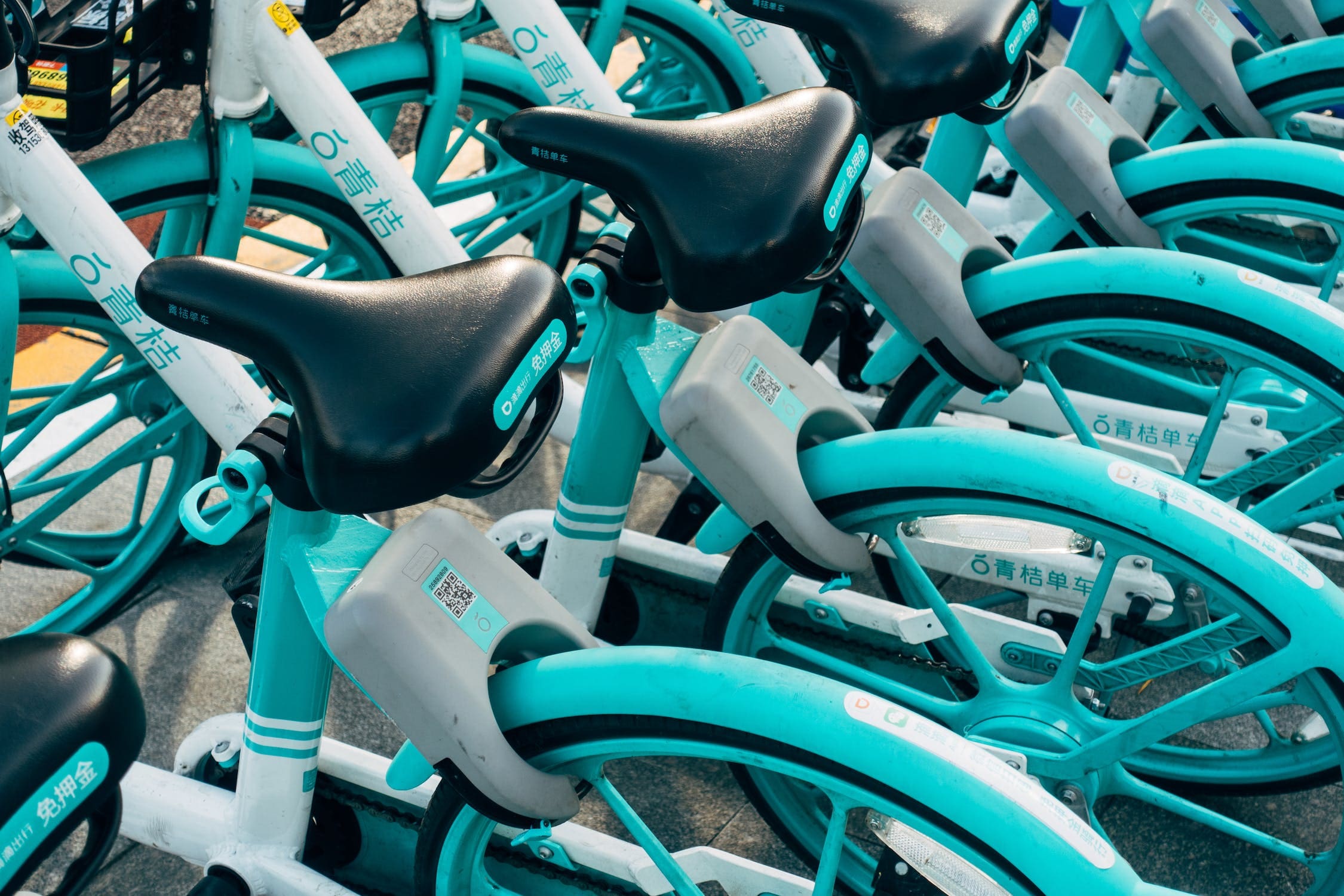
Photo by Markus Winkler from Pexels
They are also more likely to follow safety regulations. Reputable bike rental businesses are well-known for their dependability. This implies that the bikes they offer are normally in good operating order, lowering the possibility of unforeseen breakdowns or maintenance concerns during your journey.
Download the App: Many bike rental firms in Paris have mobile apps that make it simple to find and unlock bikes. This makes it simple to locate a bike and track your rental. Download the app and create an account ahead of time for a more seamless experience.
Subscription Options: Bike rental firms in Paris frequently provide subscription alternatives for individuals who intend to use the bikes on a regular basis. When compared to renting bikes on a per-ride basis, these subscriptions can result in significant cost savings.
Paris normally provides a variety of subscription choices to accommodate varying usage patterns; A day pass is a good option if you only plan to use the bikes for a day or a few trips during your stay. It gives you 24-hour access to the bikes for a fixed charge that covers unlimited short rides within that time span.
Weekly passes are appropriate for those who plan to explore the city for a week or longer and Monthly passes are the greatest deal for longer stays or residents who want constant access to bikes. They offer unrestricted bike usage for an entire month, making them excellent for commuters or tourists planning a longer stay.
Safety Gear: In the context of renting a bike in Paris “safety gear” refers to protective items that can improve your safety while cycling. The Importance of Helmets: A helmet is an essential piece of safety equipment for bikers. In the case of a fall or collision it protects your head.
Because head injuries can be severe and even fatal, wearing a helmet dramatically minimizes the risk of harm. Adults were not required to wear helmets while cycling in Paris as of my most recent information update in September 2021.
However, laws and regulations might change so it’s critical to check the city’s current guidelines and recommendations for helmet use. Even if it is not legally necessary it is highly recommended for safety reasons.
Bike Routes: Learn about the bike routes and lanes in Paris. Take advantage of the city’s wide network of bike lanes to be safe and avoid traffic.
Here are five Bike Routes you can do on your own in Paris

EURIST e.V., CC BY 2.0, via Wikimedia Commons
Locking Your Bike: Always lock your bike securely when you come to a halt. Most rental bikes have built-in locks or can be locked using an app. To prevent theft, use this feature.
Parking Zones: When renting a bike in Paris, understanding the approved bike parking zones is critical to ensuring safe and responsible usage of the city’s bike-sharing system. Paris has designated various spots and zones throughout the city where rental bikes can be safely parked. To facilitate organized and secure bike parking, these sites are outfitted with bike racks, stands, or designated parking spaces.
Traffic Rules: When renting a bike in Paris it is critical to follow traffic rules to safeguard your safety and the safety of others on the road. Every large city including Paris has a system of traffic laws and signals that apply to all road users, including cyclists.
These rules include following traffic signals, stopping at stop signs, and ceding to pedestrians in crosswalks. It is critical to obey traffic signals when cycling in Paris. This includes coming to a complete stop at red lights, proceeding when the light becomes green, and exercising caution when the light goes yellow.
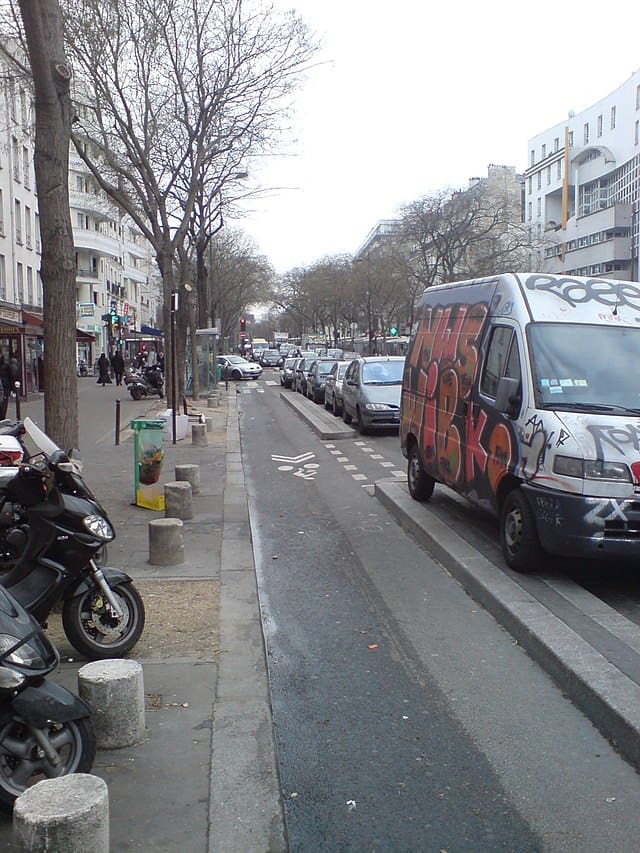
Ingolfson, Public domain, via Wikimedia Commons
Ignoring traffic lights can lead to accidents and endanger both you and others. Traffic in Paris can be hectic, and some drivers can be hostile. It is critical to remain aware, respect traffic rules, and demand your right of way when necessary, but do so gently and without participating in road rage. Riding on sidewalks is generally not permitted in Paris.
Follow the rules of the road or designated bike lanes. Riding on sidewalks is harmful for pedestrians and is punishable by fines. Before renting a bike in Paris, familiarize yourself with the local traffic rules and regulations. These restrictions may differ from those in your native country, so it’s critical to understand what’s expected of cyclists in the city.
Maintenance: When renting a bike in Paris, maintenance is critical to ensuring your safety and a pleasant biking experience. Before you begin your ride, you should undertake a short inspection of the bike. This examination comprises looking for any apparent or possible flaws that may be affecting your ride.
Tire condition, chain and gears, brakes, lights and reflectors, and bike lock are all important considerations. Stop riding immediately if you discover any concerns or issues during your journey. Continuing to ride a broken-down bike can be risky. If you have any problems while riding, contact the rental service’s customer care.
Respect Pedestrians: “Respect pedestrians” is a basic rule for safe and considerate biking in any metropolitan area, including Paris. In Paris, pedestrians have the right of way on sidewalks, crosswalks, and pedestrian zones. This means that when biking in these places, you must defer to pedestrians.
It is critical to understand that walkers are more fragile and less agile than cyclists, necessitating extra caution. Being courteous entails being nice and considerate of others. When biking in congested places, keep an eye out for people and slow down as needed. Yielding to pedestrians is courteous and contributes to a harmonious and safe environment for all.
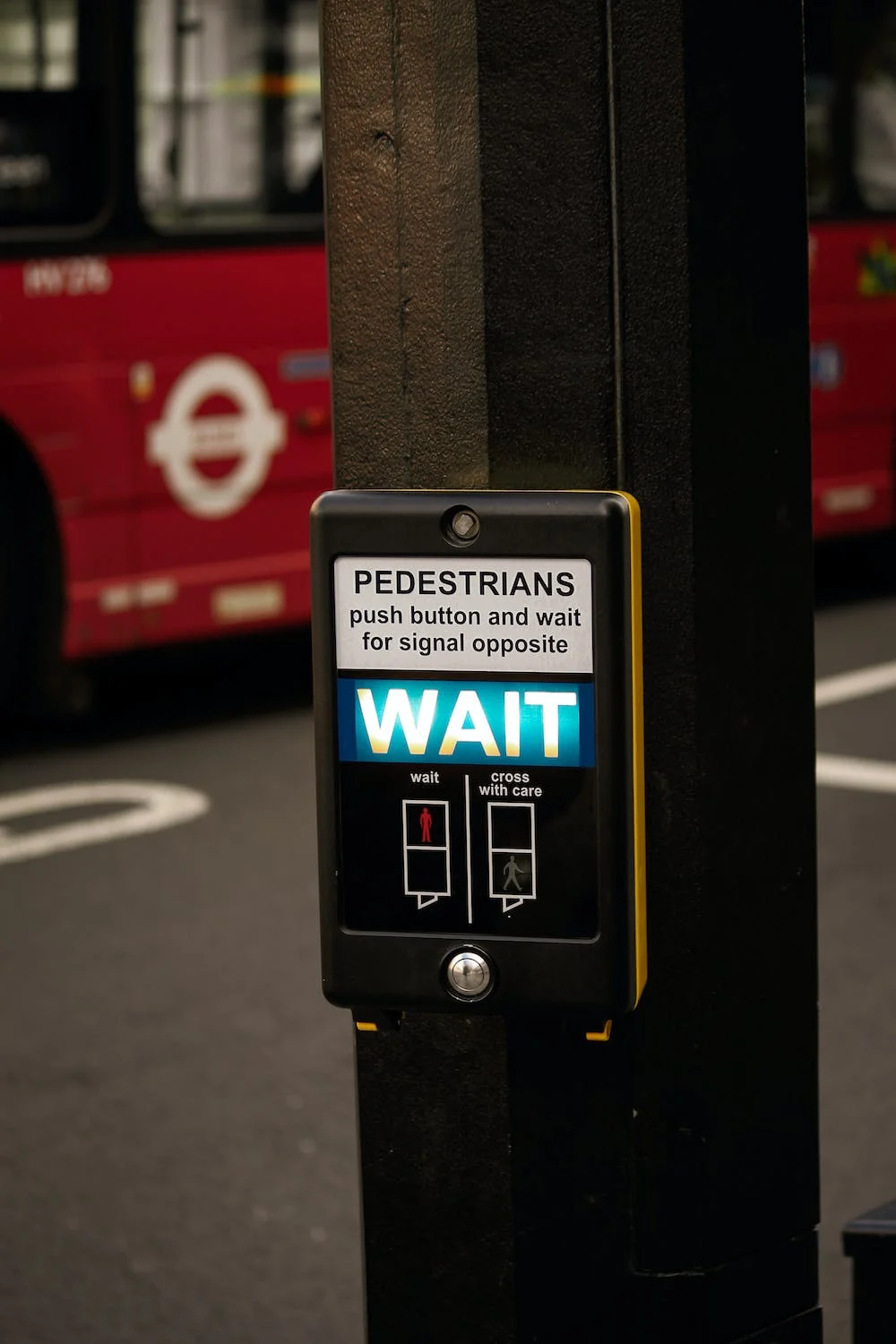
Photo by Sofía Marquet from Pexels
In some places of Paris, shared paths or bike lanes may be found alongside pedestrian sidewalks. It is critical in such instances to respect the specified area for both walkers and bikers. Stay inside your lane and give way to pedestrians when crossing or merging into their path.
See you soon in Paris!
Planning a trip to Paris ? Get ready !
These are Amazon’s best-selling travel products that you may need for coming to Paris.
Bookstore
- The best travel book : Rick Steves – Paris 2023 – Learn more here
- Fodor’s Paris 2024 – Learn more here
Travel Gear
- Venture Pal Lightweight Backpack – Learn more here
- Samsonite Winfield 2 28″ Luggage – Learn more here
- Swig Savvy’s Stainless Steel Insulated Water Bottle – Learn more here
Check Amazon’s best-seller list for the most popular travel accessories. We sometimes read this list just to find out what new travel products people are buying.

